The winners and finalists of the 2023 Close-Up Photographer of the Year (CUPOTY) Awards have just been revealed! More than 12,000 entries from 67 countries were submitted, and the judges have picked the best ones in eleven categories: Animals, Insects, Butterflies and Dragonflies, Invertebrate Portrait, Underwater, Plants, Fungi and Slime Moulds, Intimate Landscape, Human Made, Micro (for images created using a microscope) and Young Close-up Photographer of the Year (for entrants aged 17 or under).The competition highlights the skill of photographers who take captivating close-up pictures, showing the beauty and intricacy of the world around us. Check out the incredible hidden wonders of nature below! And don’t forget to take a look at thefull gallery of winners and finalistson the CUPOTY website.More info:cupoty.com|Instagram|Facebook|twitter.comThis post may includeaffiliate links.
The winners and finalists of the 2023 Close-Up Photographer of the Year (CUPOTY) Awards have just been revealed! More than 12,000 entries from 67 countries were submitted, and the judges have picked the best ones in eleven categories: Animals, Insects, Butterflies and Dragonflies, Invertebrate Portrait, Underwater, Plants, Fungi and Slime Moulds, Intimate Landscape, Human Made, Micro (for images created using a microscope) and Young Close-up Photographer of the Year (for entrants aged 17 or under).
The competition highlights the skill of photographers who take captivating close-up pictures, showing the beauty and intricacy of the world around us. Check out the incredible hidden wonders of nature below! And don’t forget to take a look at thefull gallery of winners and finalistson the CUPOTY website.
More info:cupoty.com|Instagram|Facebook|twitter.com
This post may includeaffiliate links.
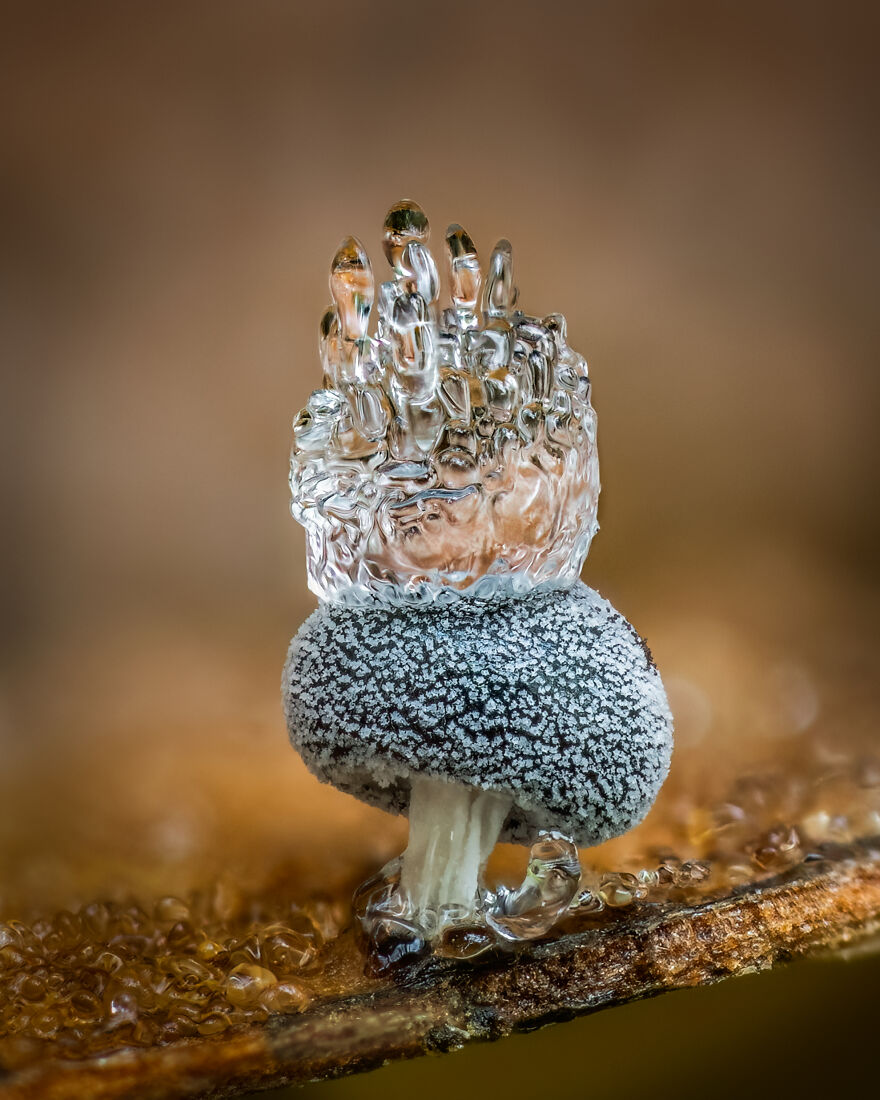
Hungarian photographer Csaba Daróczi won the Close-up Photographer of the Year 2023 title. He captured an amazing photo of a Eurasian nuthatch in mid-flight, taken from inside a hollowed-out tree stump.According to the organizers, for his achievement, Csaba will receive a £2,500 (US$3,100) cash prize, a Universal License for Affinity Photo, Designer, and Publisher apps, a NiSi macro focusing rail NM-200S, a NiSi macro 77mm close-up lens, and the Close-up Photographer of the Year (CUPOTY) trophy. His winning photograph will also be showcased to a global audience in the Top 100 online gallery atcupoty.com.
Hungarian photographer Csaba Daróczi won the Close-up Photographer of the Year 2023 title. He captured an amazing photo of a Eurasian nuthatch in mid-flight, taken from inside a hollowed-out tree stump.
According to the organizers, for his achievement, Csaba will receive a £2,500 (US$3,100) cash prize, a Universal License for Affinity Photo, Designer, and Publisher apps, a NiSi macro focusing rail NM-200S, a NiSi macro 77mm close-up lens, and the Close-up Photographer of the Year (CUPOTY) trophy. His winning photograph will also be showcased to a global audience in the Top 100 online gallery atcupoty.com.
“This photograph was taken during a blackwater dive in Romblon, Philippines. Blackwater diving is a type of scuba diving that takes place at night in the open ocean, with thousands of meters of water below the boat. Divers descend a rope with underwater lights as their only orientation system. When the tide and moon phases are right, creatures from the deep migrate to shallower waters. This vertical migration is one of the most remarkable natural phenomena. During the dive, I saw something shining under my searchlight at 28 meters deep. As I swam closer to investigate, I found a lava moray eel curled into a heart shape. I was extremely fortunate to capture this moment with my camera. The eel remained at that depth for less than 10 seconds before swimming down and disappearing into the darkness.”
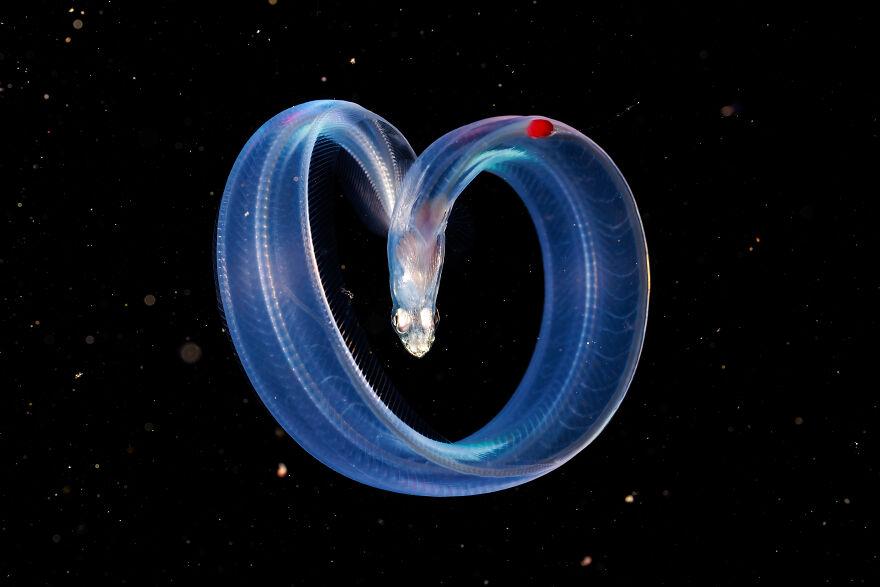
“After finding a big patch of slime mould fruiting bodies under a log, I checked on them regularly for a few days until they were at just the right stage for me to photograph them. After trying out various angles and compositions I chose this perfectly arranged little group, and took a focus stack to get all of them in focus.”

Tracy Calder, one of the CUPOTY co-founders, shared, “Thanks to these creative and original pictures, I now know that tadpoles can eat birds, ants fire acids like water pistols, and bees sometimes hold each other’s legs while they sleep. Personally, I think this is our best collection of winning images yet, and I’m so grateful to those who entered as it allows us to see and learn from their work and to recognize how incredible and surprising the world is.”
“I visited this small dune in the Kalmyk semi-desert in different months for several years. Each visit added new information about the most interesting local residents, the secret toadhead agamas. I observed their mating behavior, building new burrows, hunting insects, and territorial conflicts. It was these fights while defending their territory that were the most exciting spectacle. A whole ritual with initial “negotiations” with the help of various movements of the tail, demonstration of intimidating poses, and a preliminary warlike dance culminated in a tough fight. This is one of the moments of such a fight in which small lizards look like grappling wrestlers on a sports mat.”
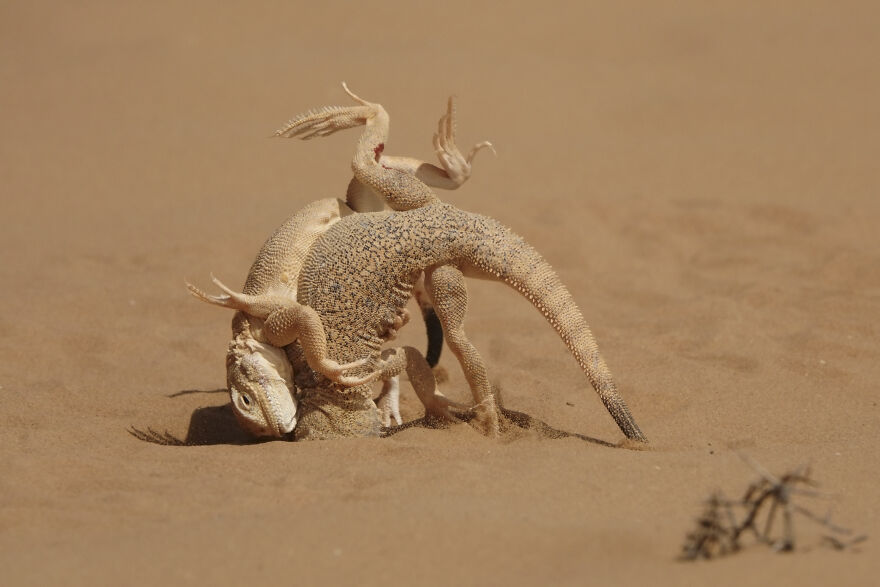
“At Trompenburg Botanical Garden in Rotterdam, I saw this beautiful reflection in the water and it immediately inspired me to make an ‘impressionist painting.”
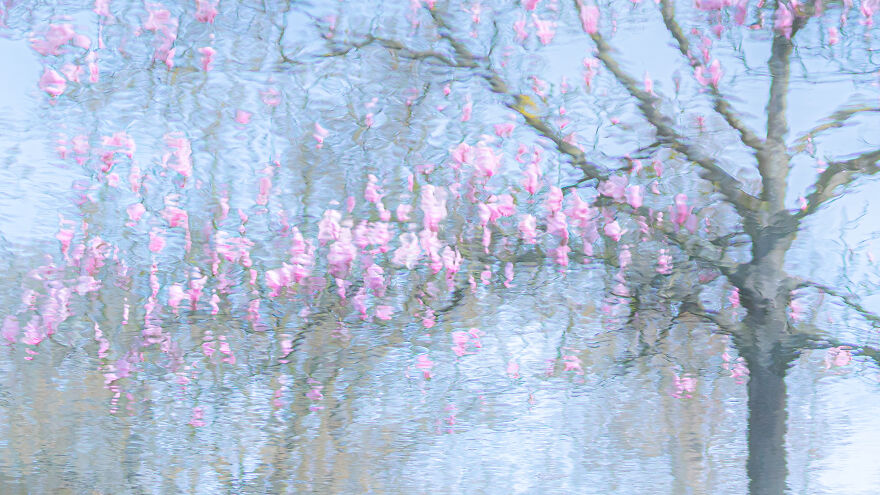
The CUPOTY 5 judging panel included recent Wildlife Photographer of the Year Karine Aigner, Nigel Atherton, the editor of Amateur Photographer, as well as photographers Sue Bishop, Jaime Culebras, Matt Doogue, Guy Edwardes, Wim van Egmond, Angel Fitor, Steven Friedman, Viktoria Haack, Ross Hoddinott, Brendan ‘Cygnus’ James, David Maitland, Scott Portelli, Georgina Steytler, Rachael Talibart, and Robert Thompson. Also, the panel featured editors Tom Gilks from BBC Wildlife Magazine, Ailsa McWhinnie, Sadie Quarrier (Director of Photography at National Geographic), Bart Somers (Insectguru), Keith Wilson, and CUPOTY co-founder Tracy Calder.
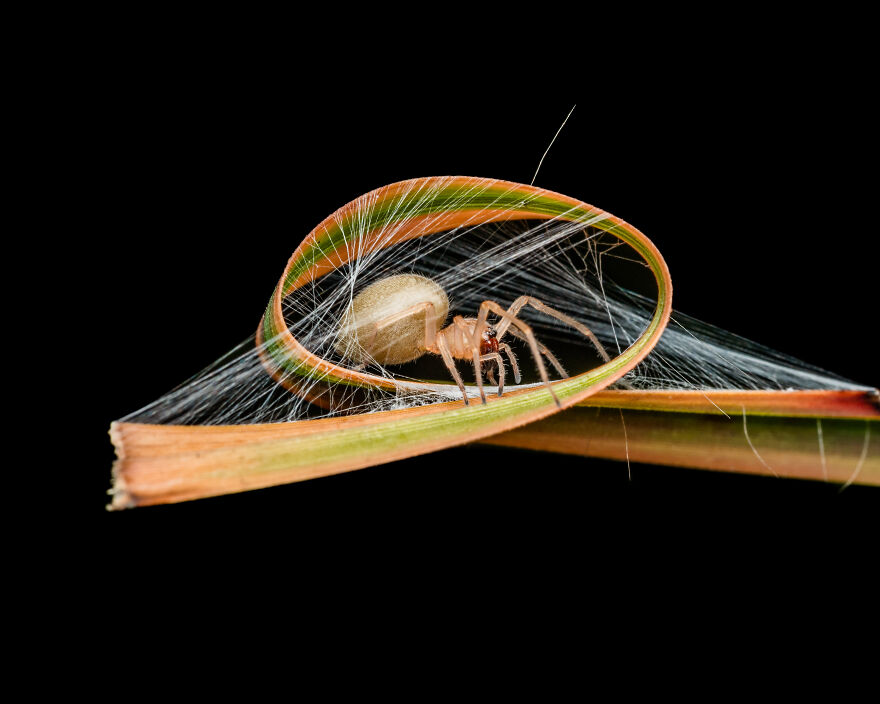
“I was photographing a wedding in a forest clearing in the beautiful surroundings of Uzsa, Hungary. The hall lights attracted a lot of insects to rest on the windows. At one point, I saw some guests taking pictures with their phones next to one of the red lights. As I moved closer, I noticed an oak peacock moth (Antheraea yamamai) had taken up residence on the window. I waited until everyone had finished their pictures, and then it was my turn.”
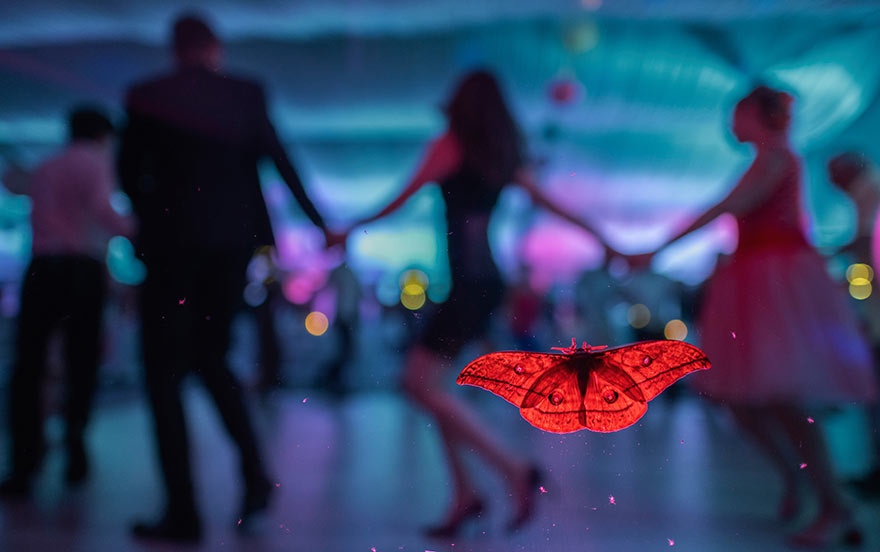
The sixth Close-up Photographer of the Year will open in May 2024. To join the CUPOTY community (and receive details about this year’s competition), visit theCUPOTY websiteand sign up to the newsletter.
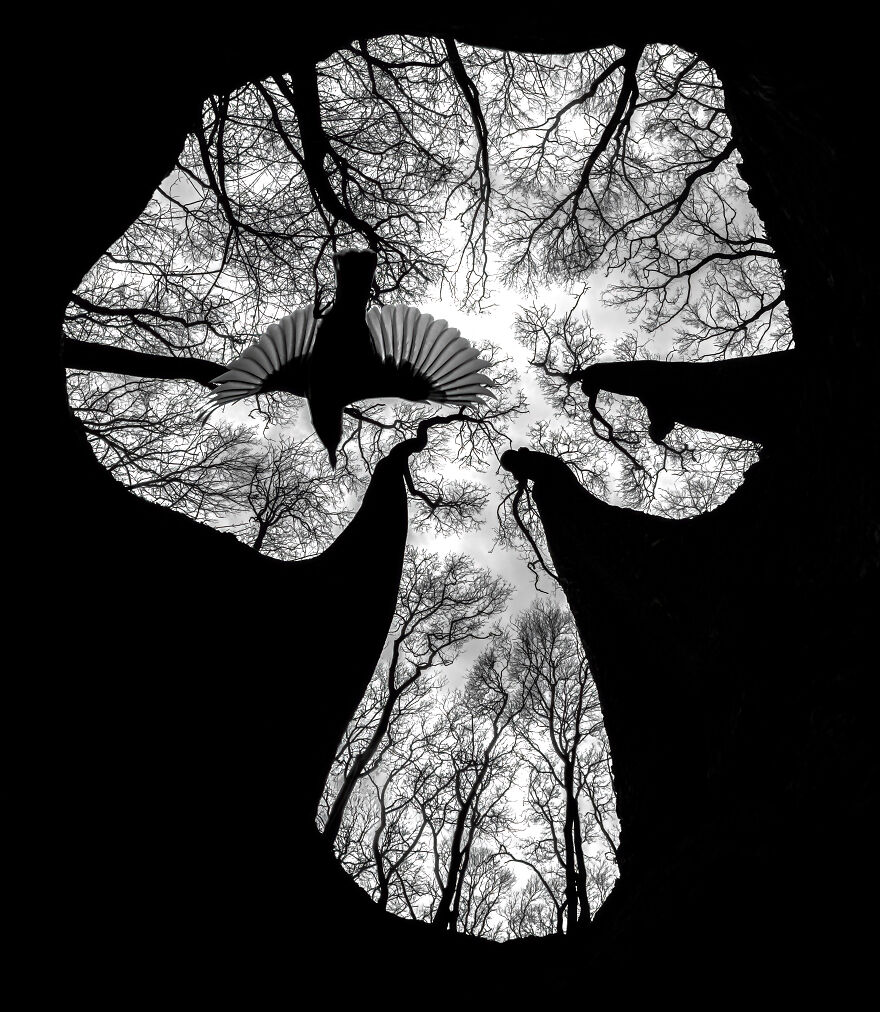
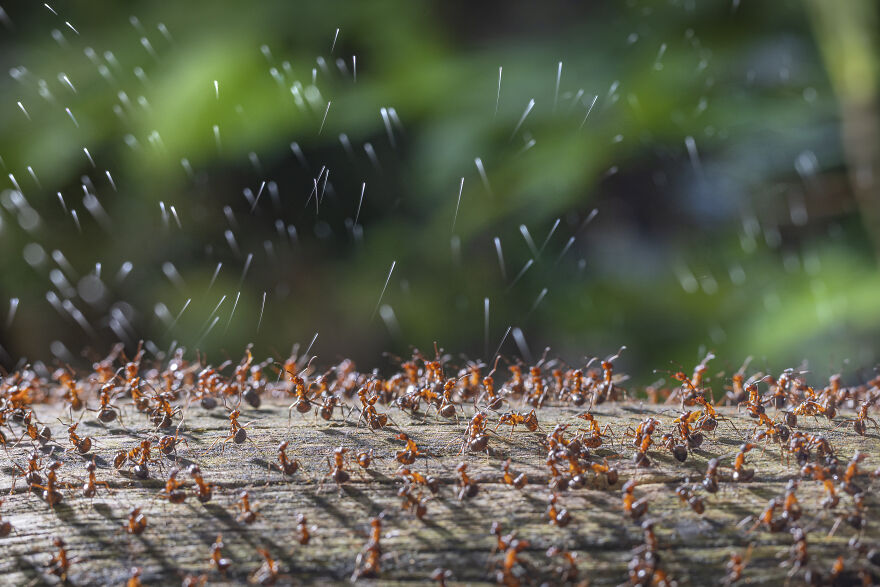
“In winter, many of the flooded wetlands in the Netherlands can be skated upon. The ice is often damaged, with pieces being chipped off. On one such occasion, I discovered a small chunk of ice stuck to a frozen twig that made me think of a prehistoric find.”
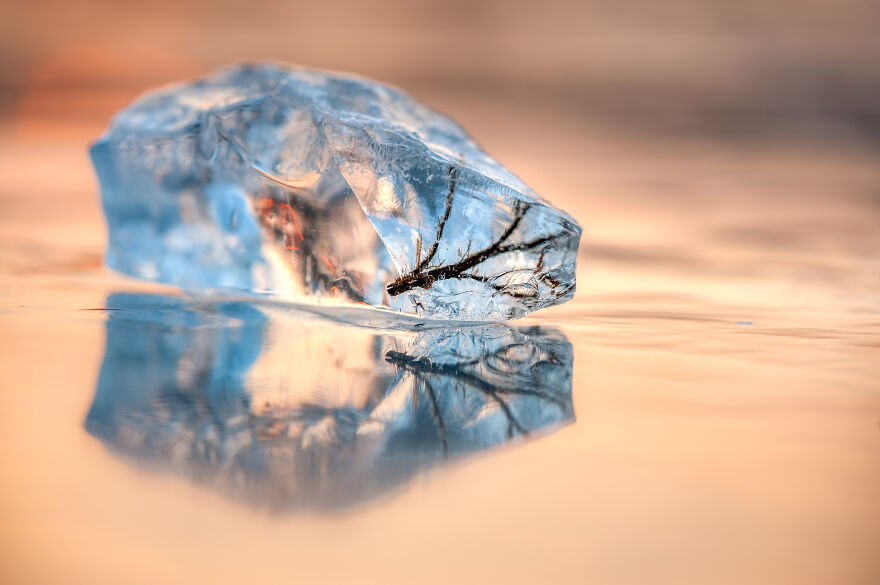
“Capturing a Four-spotted skimmer dragonfly (Libellula quadrimaculata) mating is particularly difficult because they connect and mate in-flight without any warning and for only a few seconds. The moment captured in this photo is just after the male has finished depositing his sperm on the female’s eggs and they are disconnecting. She will then attempt to deposit the eggs in the water and he will hover near her to ward off other males who would like to also mate with her.”
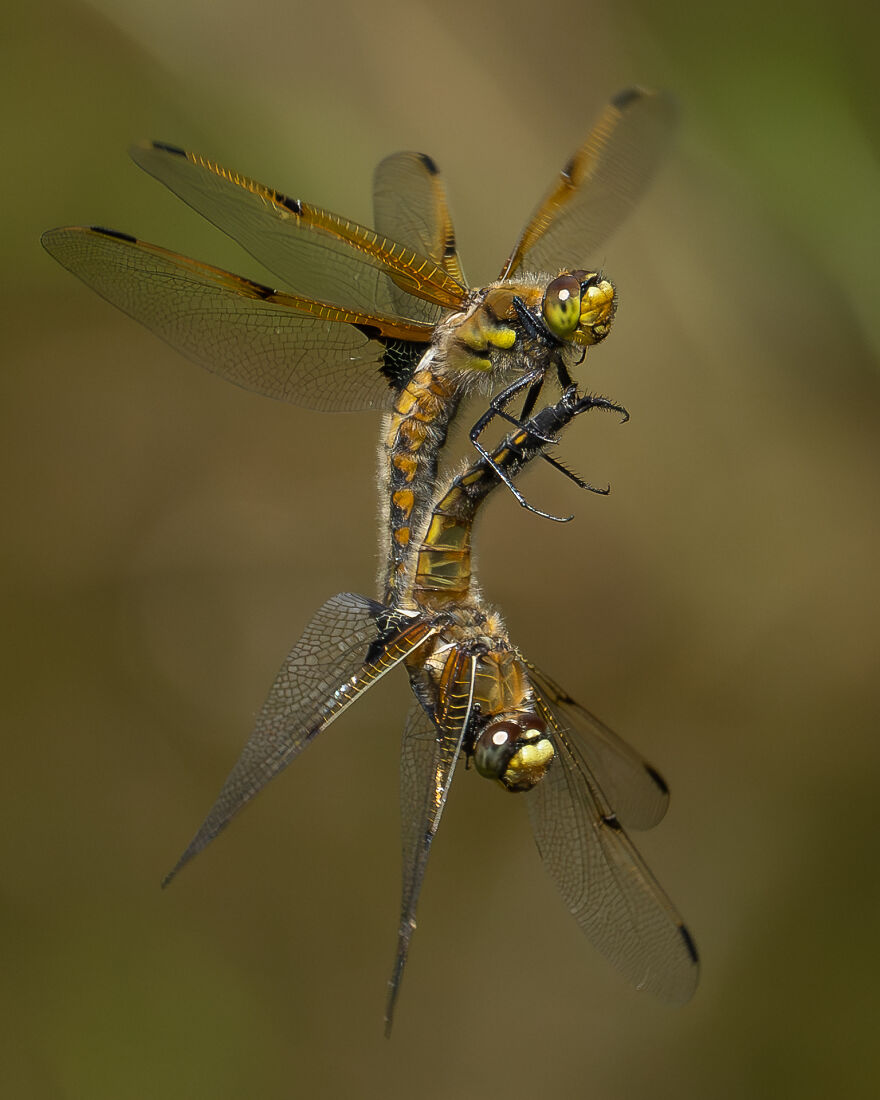
“Every autumn I visit my local forest (Hatfield Forest in Hertfordshire, UK) to photograph the fungi. These fungi were in perfect condition so I decided to take several photos and stack them later, to get as much detail as possible. Using f/2.8 to ensure the background was soft, I lit the fungi from behind so I could see the structure of the gills. I felt the picture needed a more interesting background, so I used a garden spray bottle to create a fine mist of water droplets, photographed them with flash, and added it to the original picture in post-processing.”
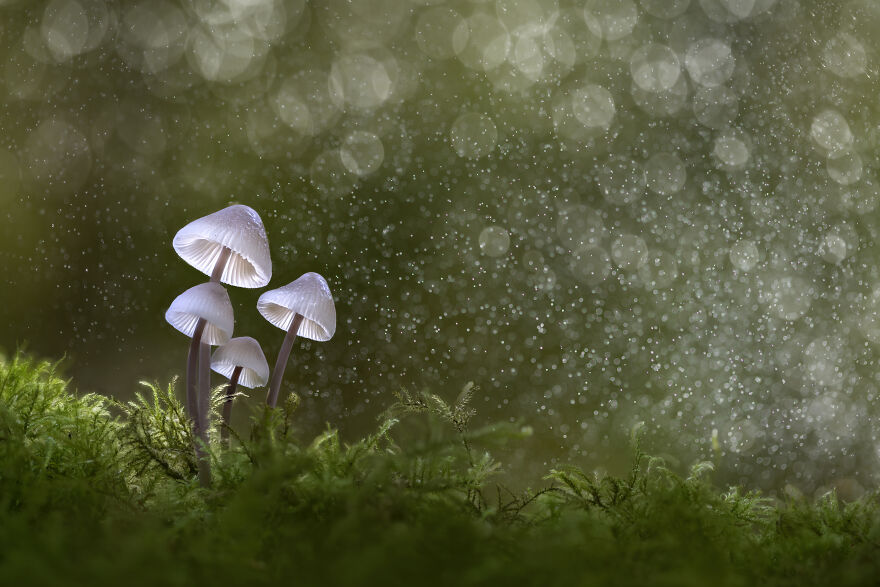
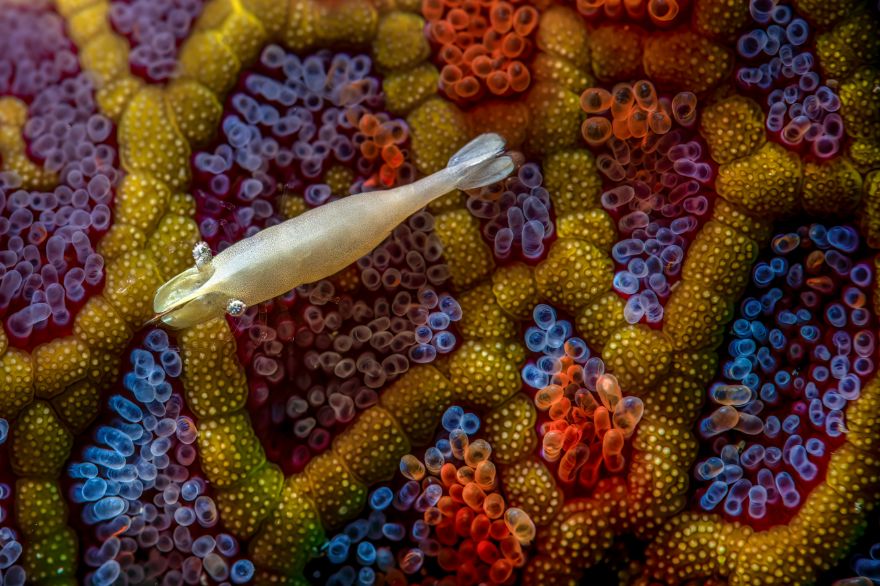
“I spotted dozens of these tiny mosquito egg rafts on the surface of a water butt while I was working as a gardener. The rafts would not stay still long enough for me to photograph them. So I carefully fished one of the egg rafts out, using a teaspoon, and placed it in an inverted bottle top filled with water. A pebble was positioned in the middle of the bottle top, and the raft was then carefully moved onto the pebble to keep it stationary. After taking the pictures, the egg raft was returned to the water butt.”
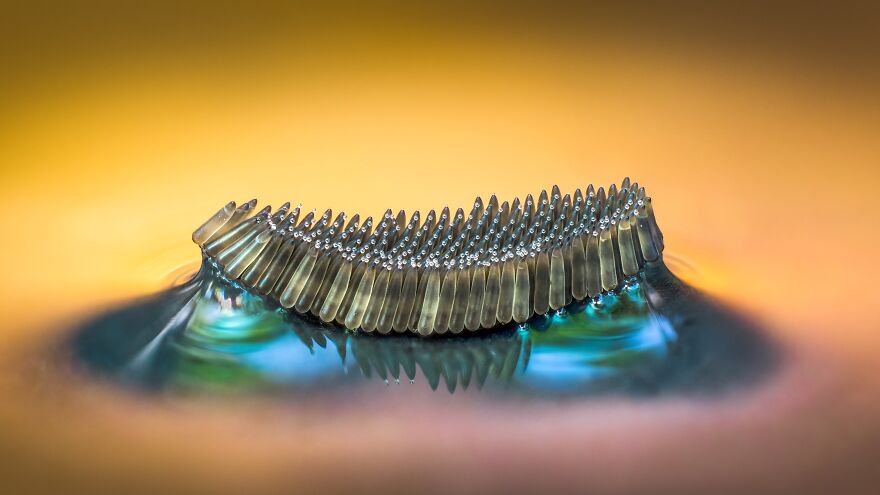
“I discovered a field covered with sundew, a small carnivorous plant. There were lots of silver-studded blue butterflies flying around and occasionally one would get caught and trapped in the sundew. Instead of photographing one of those poor victims, I favored another approach. I wanted to capture the innocent and alluring beauty of the plant, the way a butterfly might see it in its last moments. To do this, I used a vintage Pentacon lens to capture the sundew as a pair of eyelashes on seductive eyes – the beauty of your last view.”
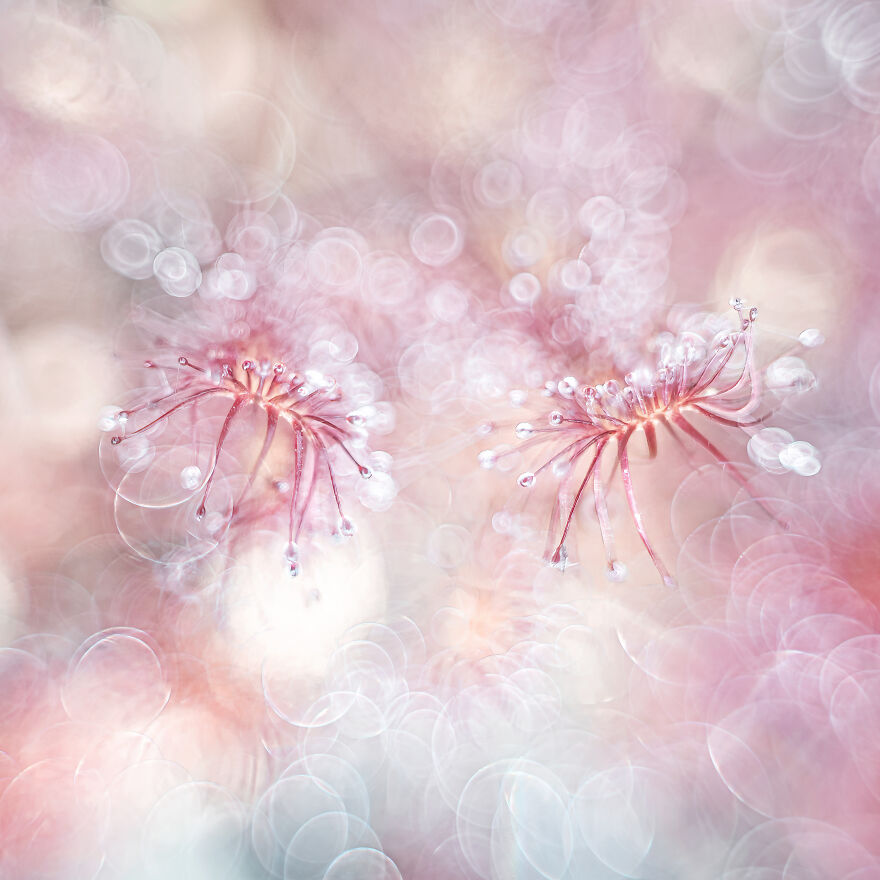
“I captured this shot during my early days as a macro photographer back in April. Just three months after getting my Olympus camera, I stumbled upon this incredible isopod in the woods behind my house in the beautiful south of Austria. This image is a result of merging 91 individual shots with varying focus points.”
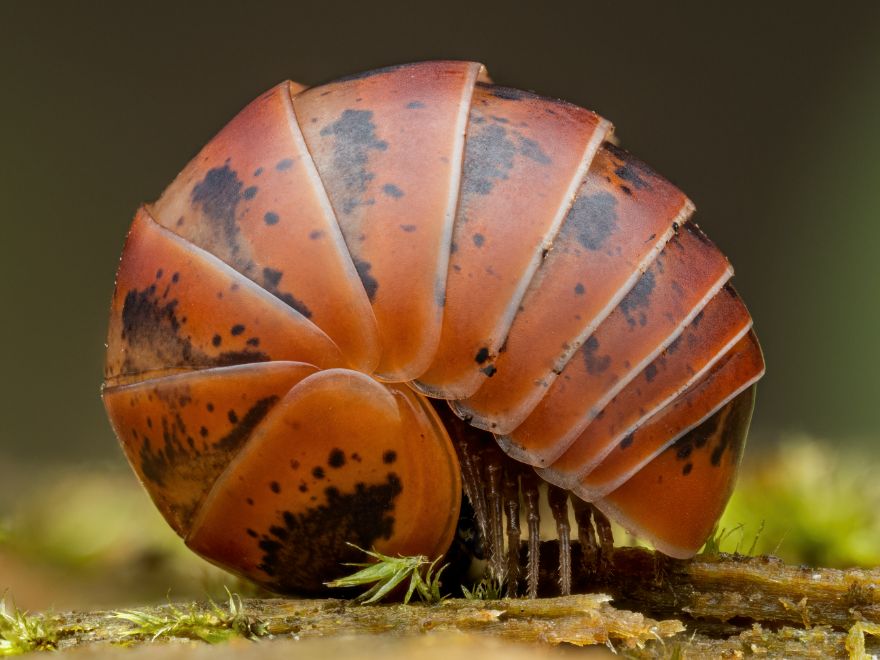
“This image shows a 30μm cross-section of beach grass (Ammophila arenaria) stained with Auramin O and Safranin and viewed under fluorescence blue excitation. The grass came from a friend’s garden in Vienna. For the best results, I had to slice the sample as thinly as possible. First, I fixed some stems in warm liquid polyethylene glycol. As it cools down, it turns solid, and the embedded stems are placed in a microtome and sliced with a sharp blade. Staining and preparing the sample was very tricky. I had to use the tiniest brush to manipulate the less than 1mm parts in different staining and chemical solutions before positioning the stems on the slide. After that, taking the photograph was the easy part!”
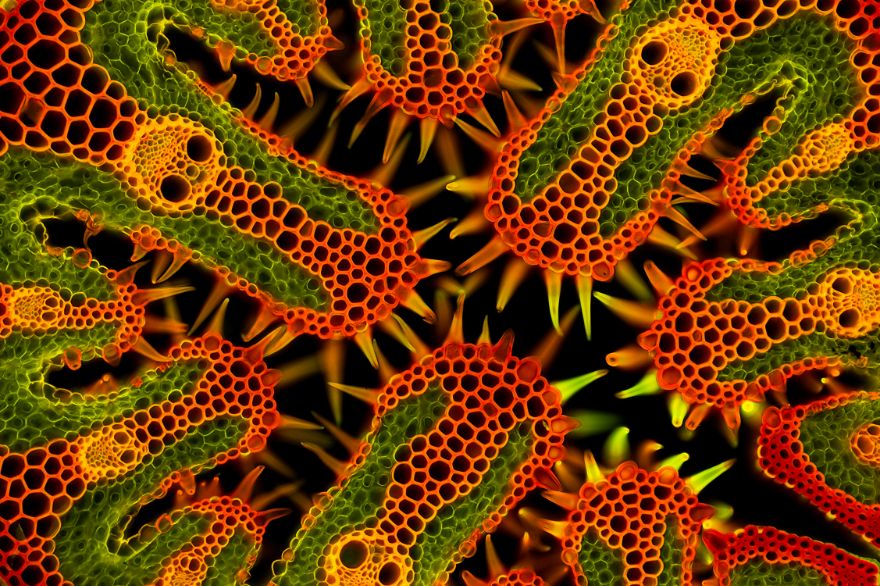
“When we traveled to Ecuador, I knew there would be an opportunity to see jumping sticks (Stiphra) in the Amazon region. When we found the first of several creatures, I was beyond excited. I had imagined this shot in my mind for a long time and it was incredible to actually have this opportunity to make it happen. The best way to describe these invertebrates is part walking stick, part grasshopper! When they jump, they are not particularly graceful, and they tend to tumble around completely off-balance.”
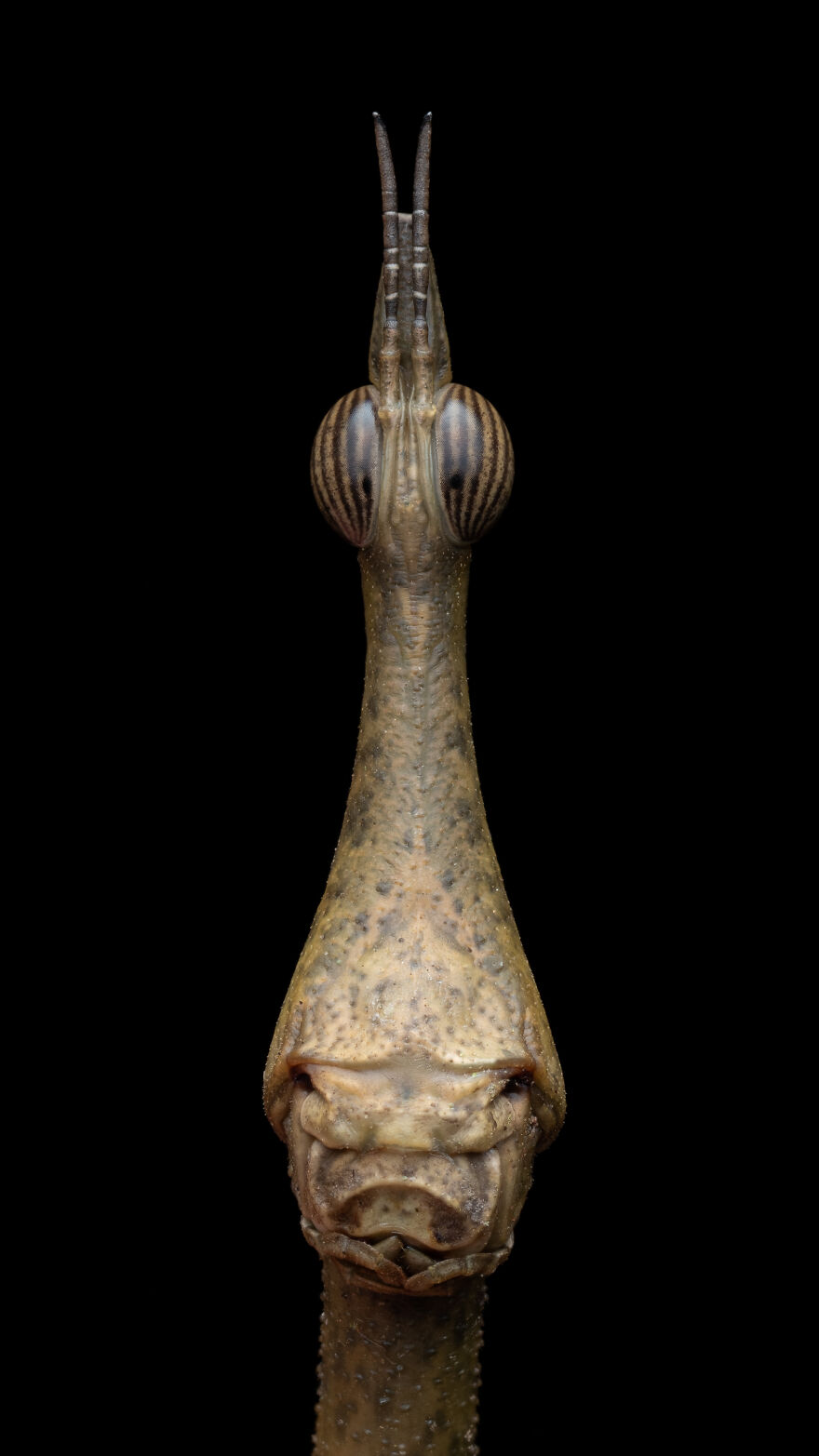
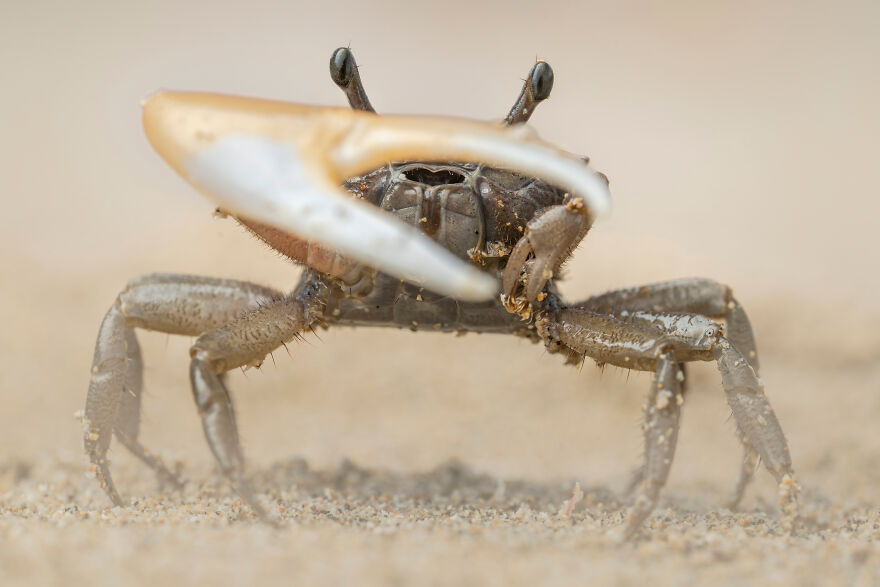
See Also on Bored Panda
“This tiny Arcella amoeba was found in a water sample collected from the English ponds of Drottningholm Castle in Stockholm. The amoeba was photographed as it moved around with the internal organelles in constant motion. The stack of 120 images captures the different features of interest, such as nuclei, vacuoles, food, pseudopods, shells, etc. When putting together the final stack, I tried to recreate the feeling of a schoolbook illustration of an amoeba.”
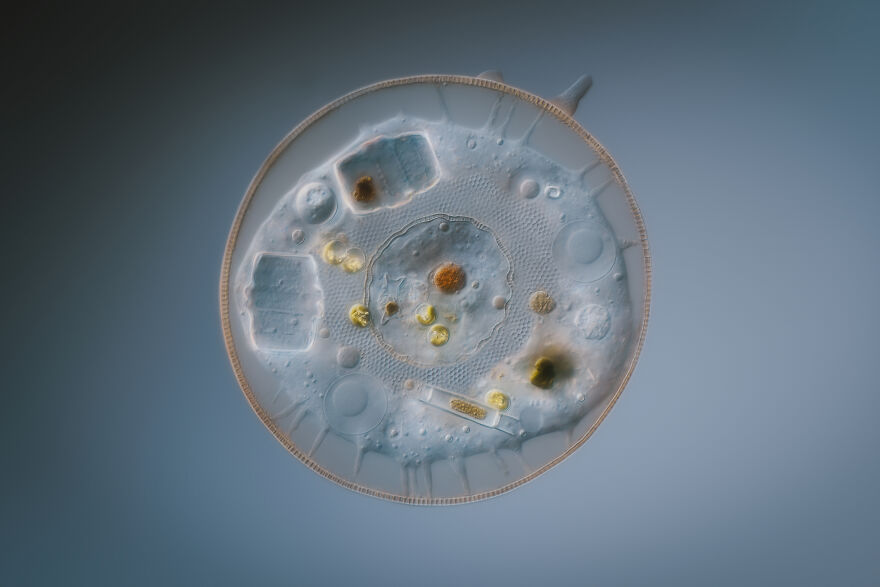
“I came across these honey fungi in my local woodland, just as the sun was rising and lighting up the woods with golden hues. The bonus was the bracken behind - which gave the picture a wonderfully warmautumnal feel. I captured it with a wide aperture, to isolate the subject, and to maximize the bokeh background.”
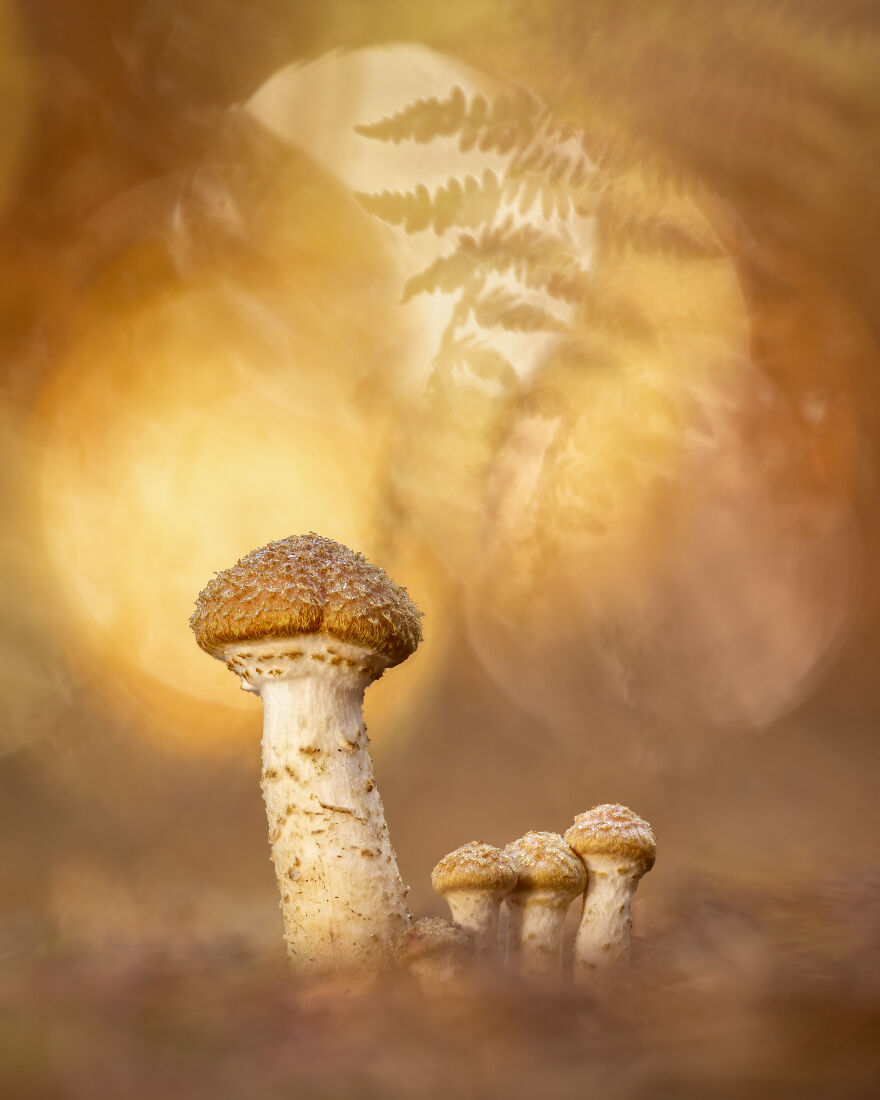
“I enjoy pushing the limits of my camera’s capabilities and experimenting with new techniques to capture ordinary objects. My collection of art supplies includes numerous spools of colored thread from previous projects. I wanted to photograph this thread in a unique way and came up with the idea of wrapping colored strands around an open picture frame. I placed the frame on a motorized rotating platform and set my camera to multiple exposure mode. I captured 64 photos of the thread at 64 equidistant positions as I rotated the platform. Since I didn’t complete a 360° rotation, the design is asymmetrical. This is a meticulous process that requires patience. For this image, I used an in-camera multiple exposures of 64 frames to output a single Raw file.”
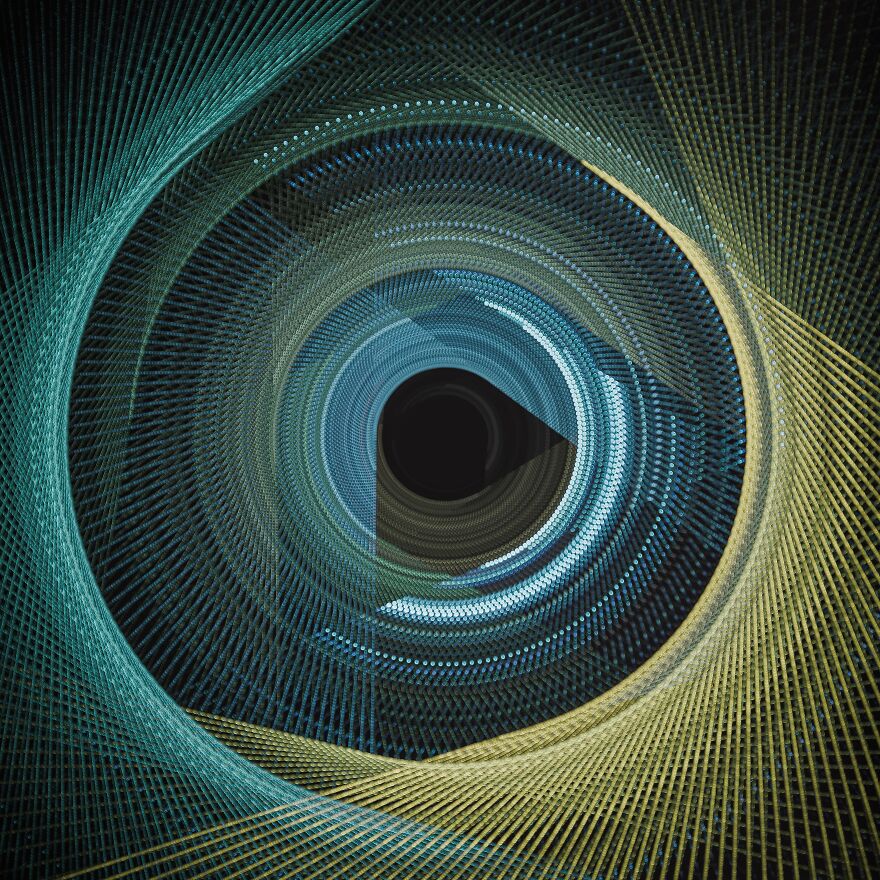
“While on a walk in the forest in winter I came across a fallen log covered in moss, and upon looking closer noticed a bunch of globular springtails in the moss. Most of them were quite active which made photographing difficult, but after looking around for a while I spotted this individual staying still. By carefully moving some moss out of the way I was able to get a good angle for a portrait with a bit of moss in the foreground for more depth.”
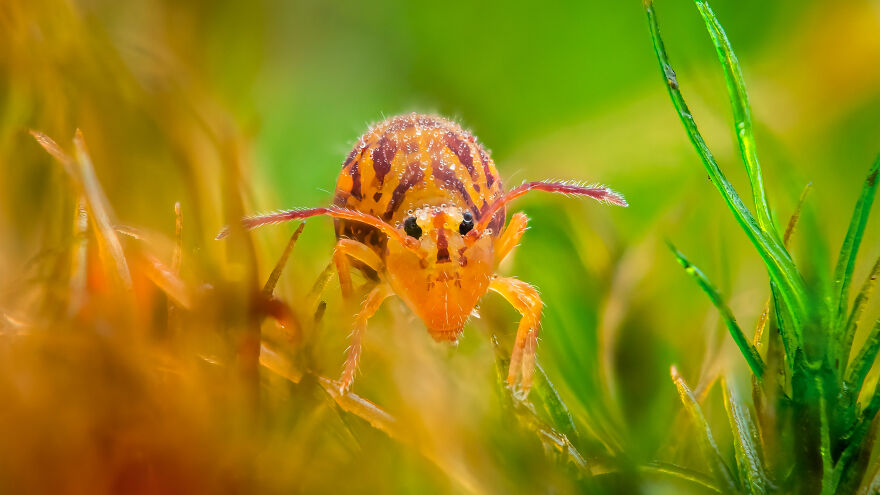
“For years, I had been wanting to make a relatively simple image of a golden damselfish set against a background of red sea whip coral. But on multiple trips to various South Pacific diving locations, there was always some problem with the sea whips – one branch would be broken, lack of current caused the polyps to be retracted, the damselfish was too rough… just always something to make me cringe with OCD! So when I found this little gem living in what is clearly NOT red sea whips, I had to twist my mind out of its rigidity, and realize that the gorgonian coral background I was searching for was indeed a different species, and was right in front of me!As a traditional fisheye lens shooter, water-contact optics have been a game-changer in underwater wide-angle photography. While not quite as wide as a fisheye lens, they still cover a large field of vision, while maintaining far superior corner sharpness and don’t introduce the extreme barrel distortion of a fisheye lens. Using Nauticam’s revolutionary WACP-1 lens/port allowed me to use a medium zoom, and create a close-focus wide-angle view from just a few inches away that, unlike a fisheye lens, appears flat and maintains focus on the entire coral environment.”
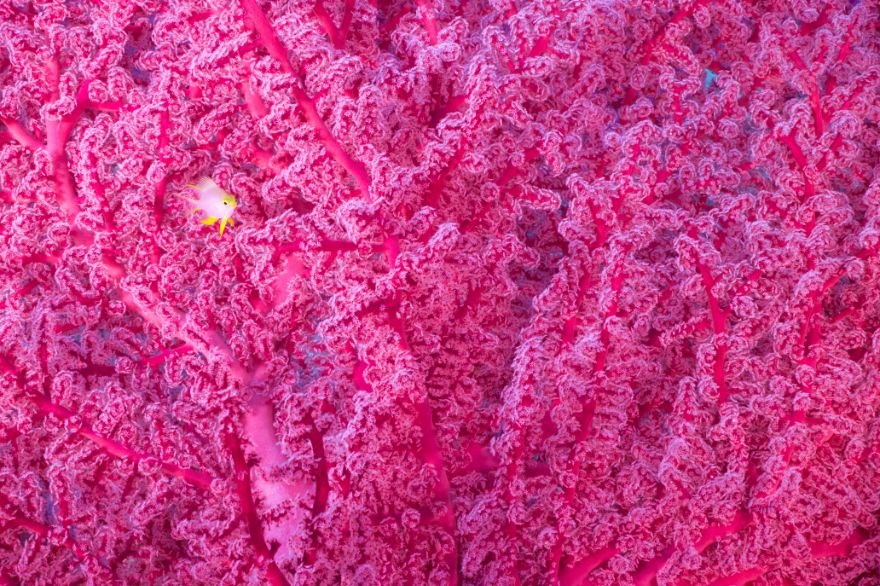
“The leaf beetle Aplosonyx ancora cuts circular trenches on the underside of leaves of their host plants before feeding. By doing so, the toxins in the leaf veins are cut off and the beetle can feed happily within.”
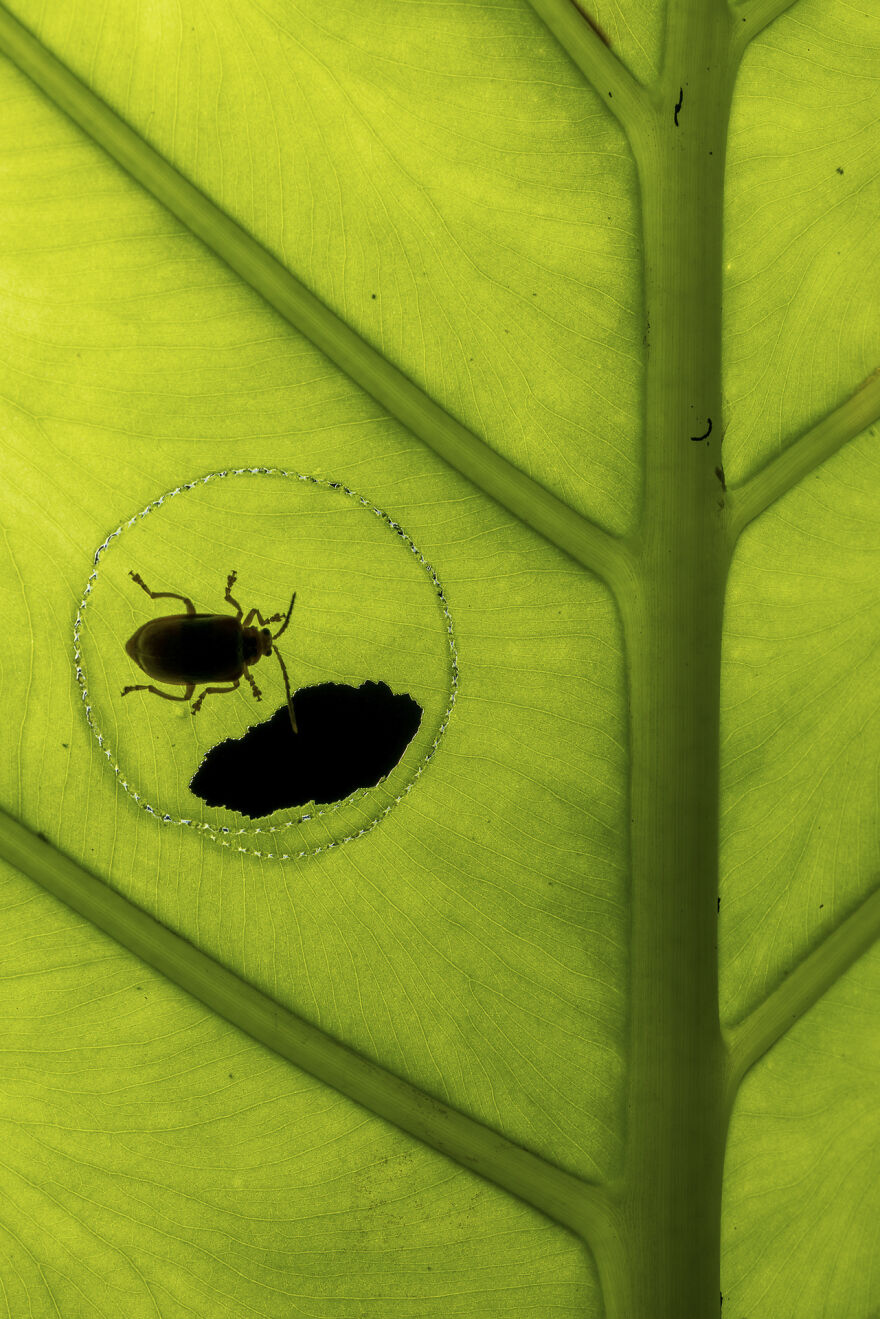
“In the wall of some houses in Calamocha – the village in Spain where I live – it’s possible to find pyrolusites. These magnesium minerals create stunning formations, which look just like petrified trees, but they are so small that they’re tricky to spot. One day, I was lucky enough to find a Moorish gecko (Tarentola mauritanica) very close to the pyrolusite’s wall, so I tried to make the most of the encounter. I wanted to capture a gecko in the ‘petrified forest’ for a long time, but they only recently appeared in my village (probably carried in fruit baskets from hotter areas). Due to climate change, they can now survive here.”
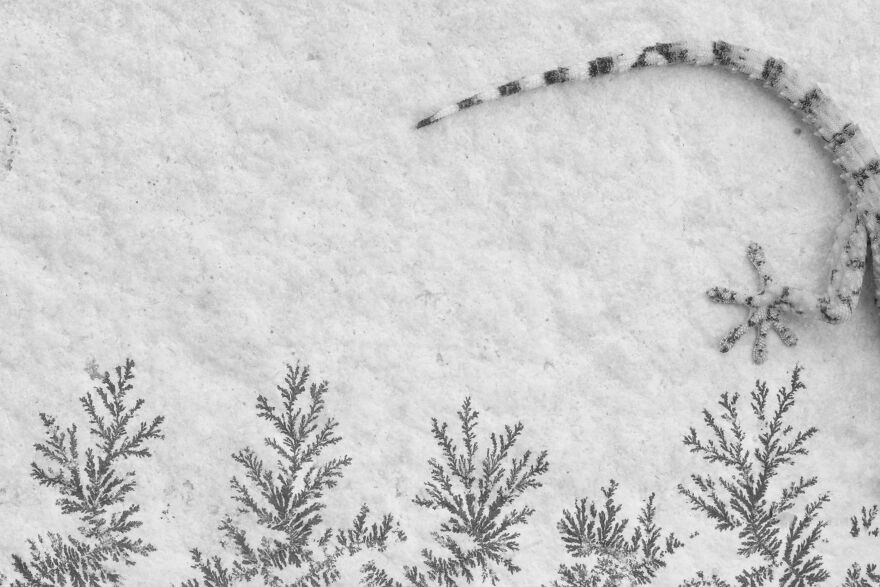
“In the first days of May, I always return to a small canal near Izsák, Hungary, where the water violet (Hottonia palustris) blooms in huge numbers. Unfortunately, flowering was delayed this year and only the leaves were still underwater. I was about to go home when I saw a tree had fallen over the canal and under its reflection the plants were clearly visible. I found it a very exciting subject and played with it for a while.”
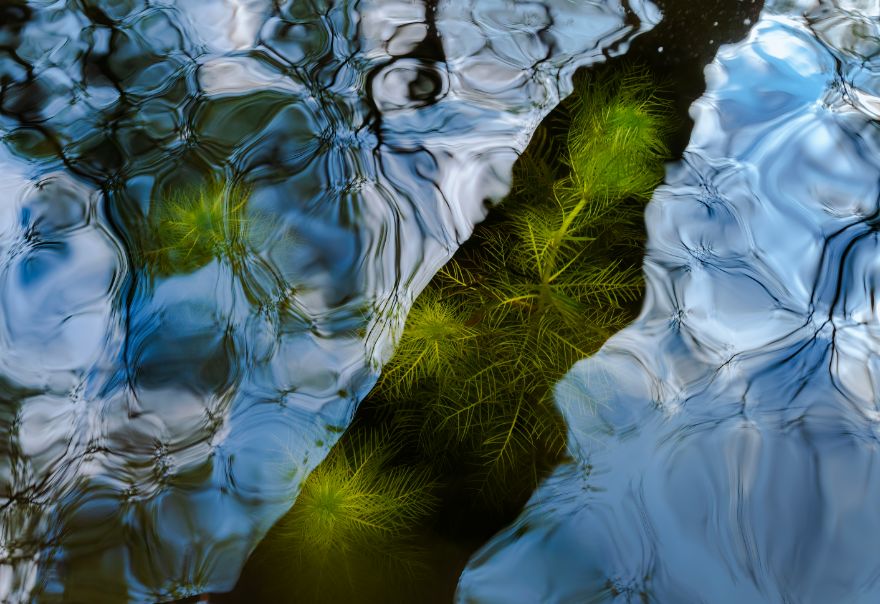
“Agaves are one of my favorite desert plants, so I spent quite a while with this specimen at the Desert Botanical Garden, Arizona, USA. The beautiful light bouncing off the red wall behind the plant drew me in. I thought the strong repeating pattern of the leaves would make a good in-camera double exposure. After taking the first image, I moved the camera slightly for the second one.”
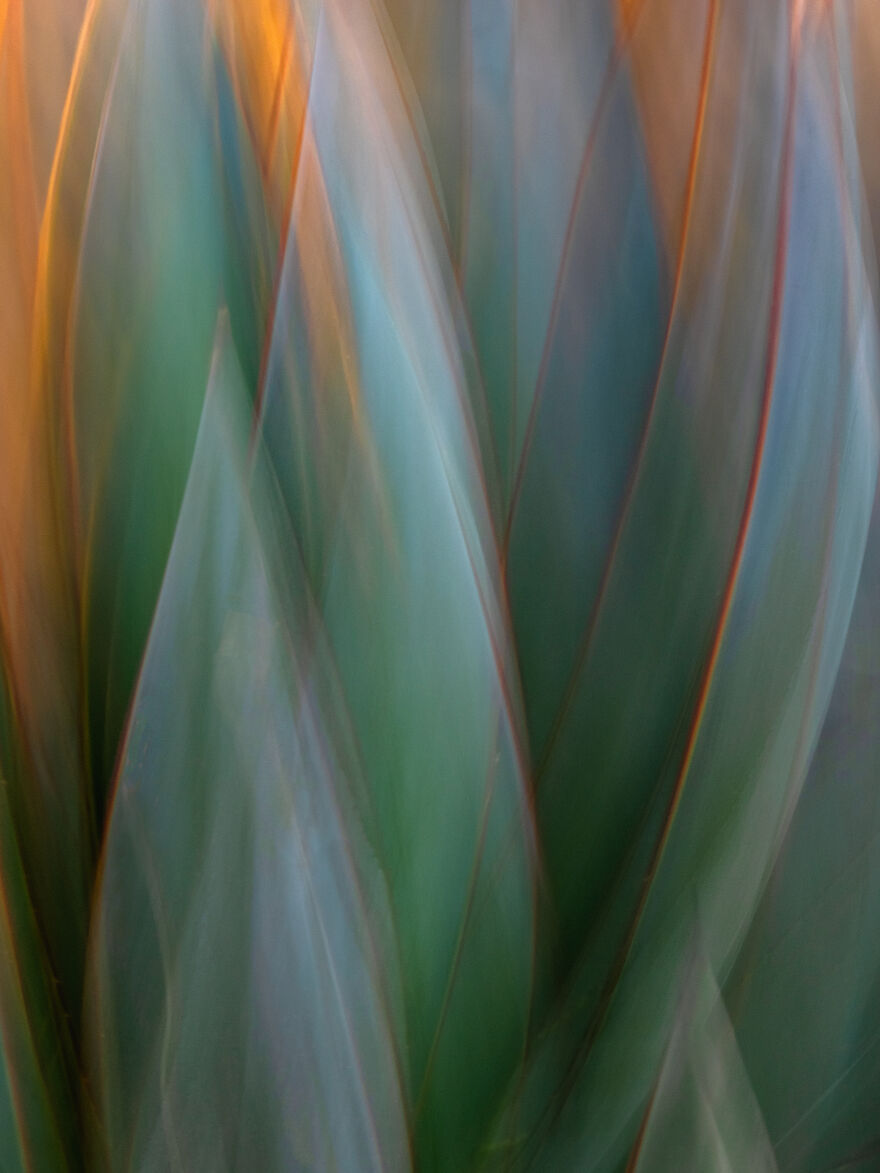
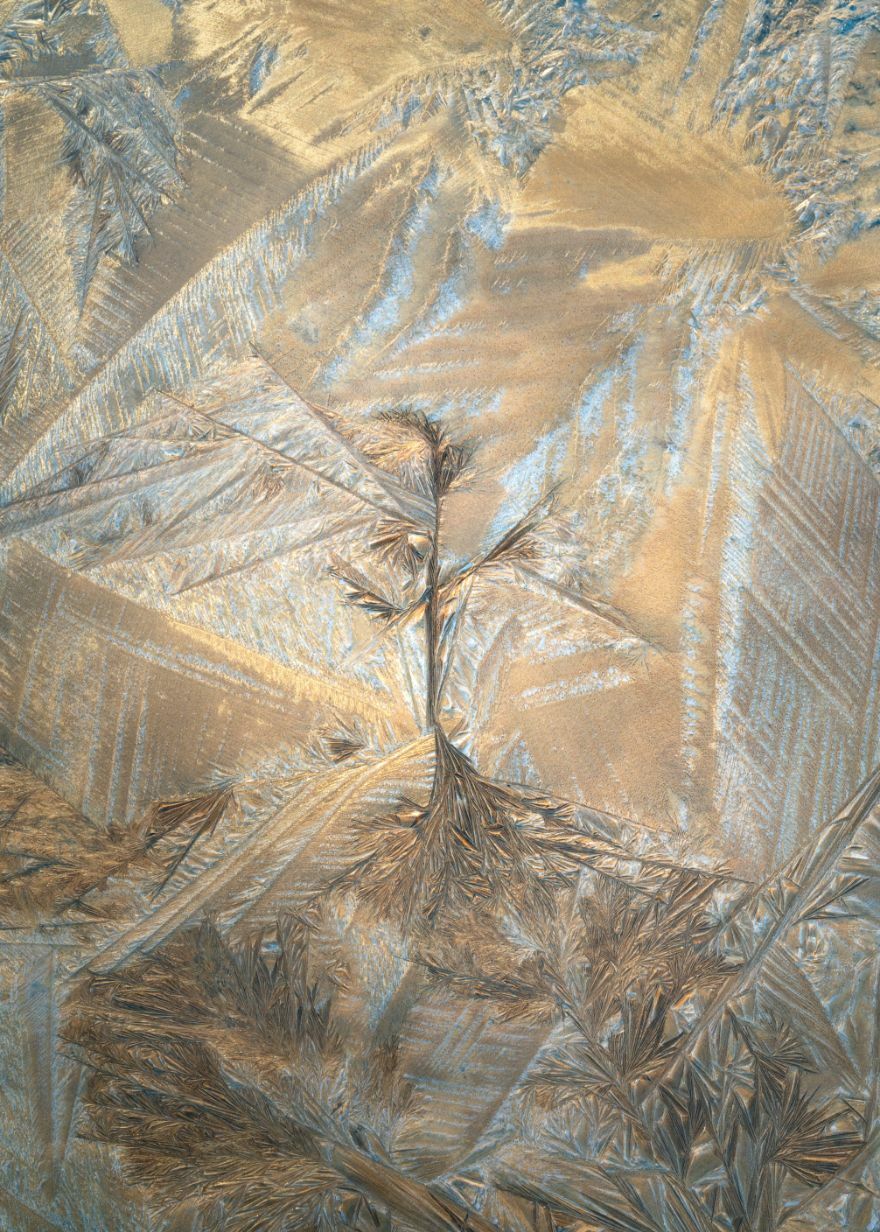
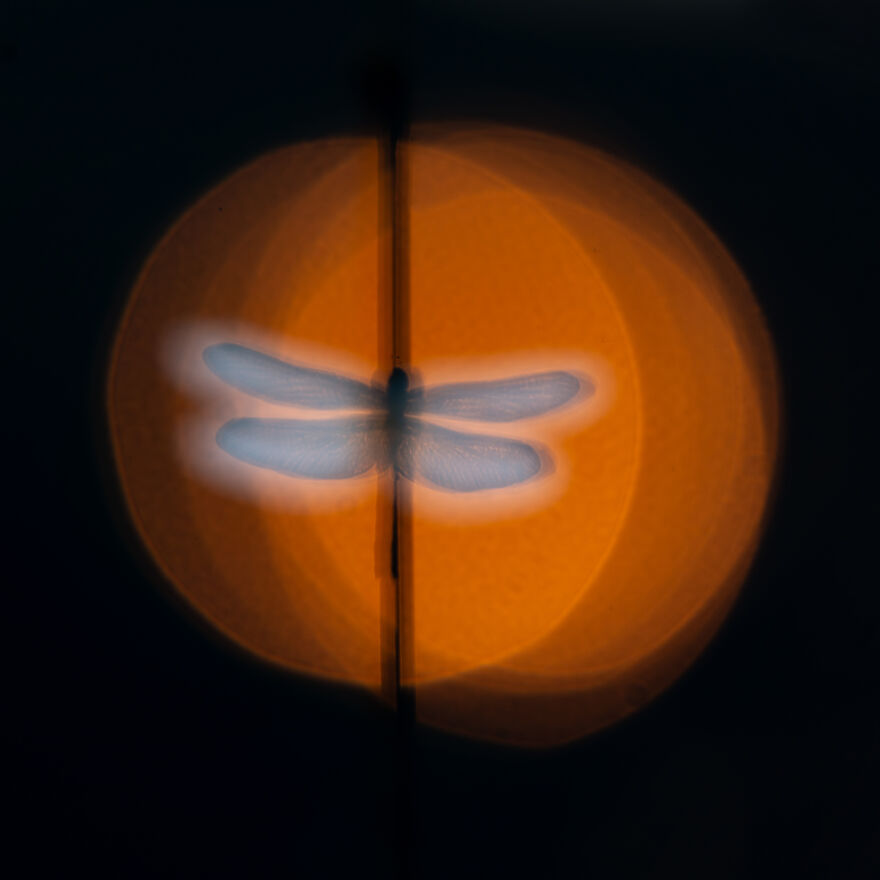
“During the Covid lockdown in the UK, we found ourselves trapped in our homes for long periods of time. To keep myself creative I started to make tiny pieces of artwork that I would shoot using various lights and techniques. This piece was made using a black foam board as a base, onto which I poured ferrofluid. A powerful magnet underneath created the pattern. Pink paint was then added using a pipette, before converting to black and white.”
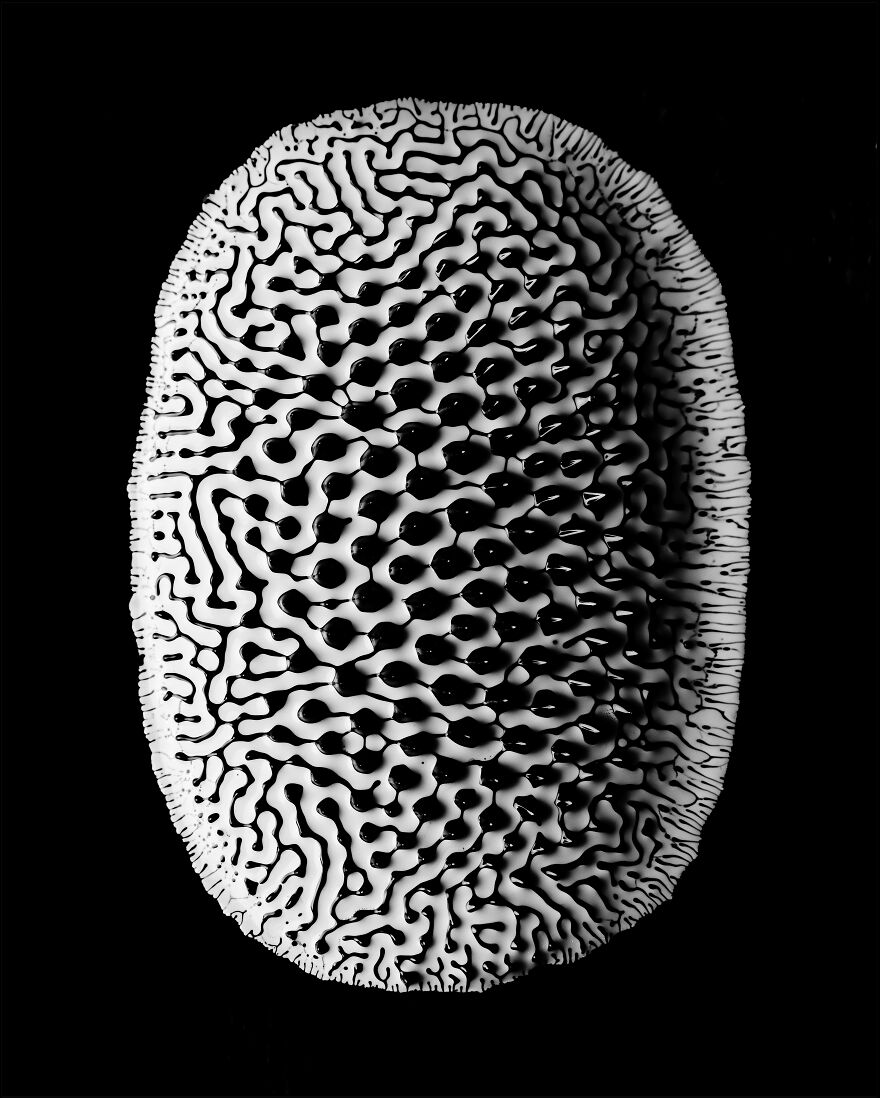
“The Colour Studies series blends traditional techniques of macro photography with experiments of layering and blending, creating unpredictable images that explore the nuances of surface, colour, light, and texture. My goal is to blur the boundary between photography and art and reference painterly techniques of pointillism, colour fields, opaque and transparent layers, and collage. The approach is often entirely unpredictable as the end result is never planned and it often diverges from the starting point. Colour Study 51 is an example where the experimentation can produce an interplay of the original shapes and produces visual depth.”
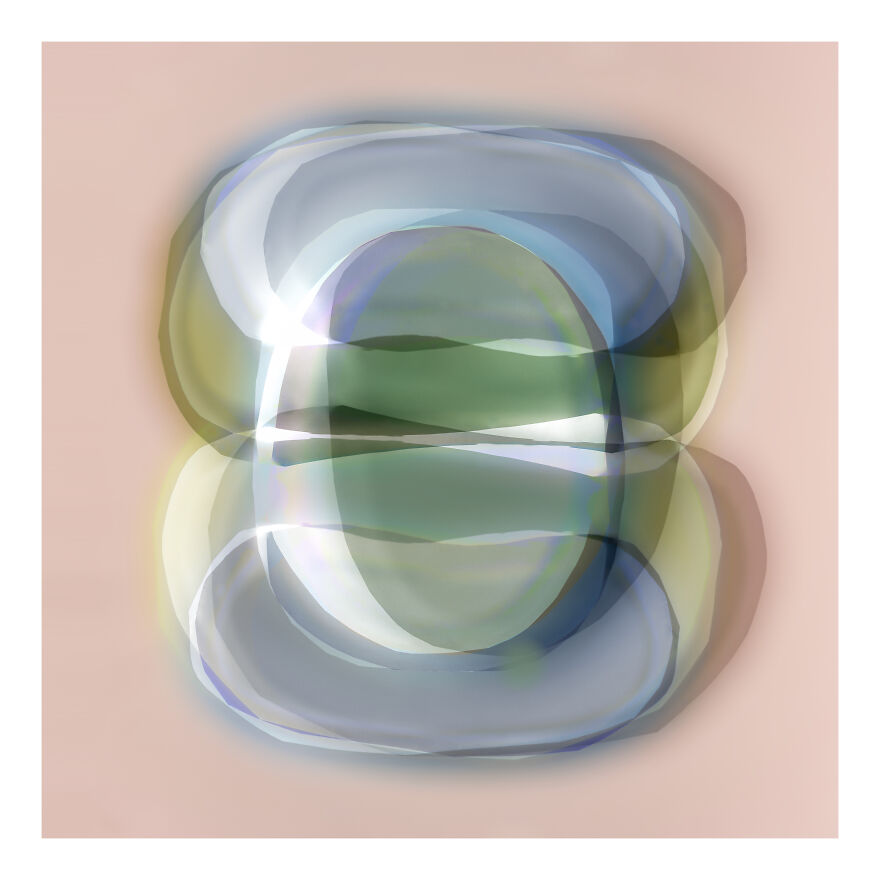
“This picture of a dandelion picked from my lawn was shot in my living room using a Mitutoyo10x microscope lens adapted to the camera using a 70-200mm f/4 lens as a tube lens. Using a motorized macro rail, I captured around 200 individual exposures that were combined in Zerene Stacker to produce the final image.I often use such a setup to “poke around” inside dandelions. Using diffused light from a window to light the dandelion from behind creates a beautiful rim light, and better contrast, and makes the dandelion ‘glow’.”
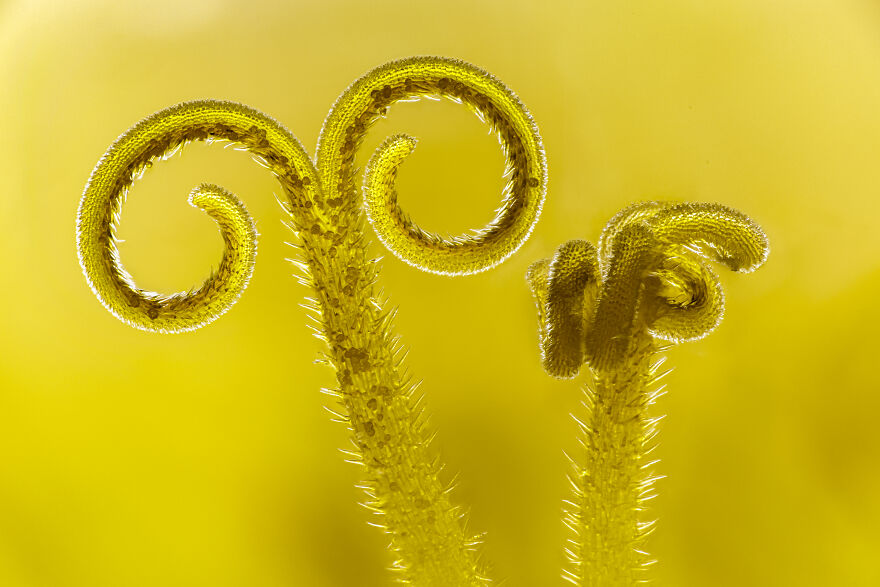
Modal closeAdd New ImageModal closeAdd Your Photo To This ListPlease use high-res photos without watermarksOoops! Your image is too large, maximum file size is 8 MB.Not your original work?Add sourcePublish
Modal close
Add New ImageModal closeAdd Your Photo To This ListPlease use high-res photos without watermarksOoops! Your image is too large, maximum file size is 8 MB.Not your original work?Add sourcePublish
Modal closeAdd Your Photo To This ListPlease use high-res photos without watermarksOoops! Your image is too large, maximum file size is 8 MB.Not your original work?Add sourcePublish
Add Your Photo To This ListPlease use high-res photos without watermarksOoops! Your image is too large, maximum file size is 8 MB.
Add Your Photo To This List
Please use high-res photos without watermarks
Ooops! Your image is too large, maximum file size is 8 MB.
Not your original work?Add source
Modal closeModal closeOoops! Your image is too large, maximum file size is 8 MB.UploadUploadError occurred when generating embed. Please check link and try again.TwitterRender conversationUse html versionGenerate not embedded versionAdd watermarkInstagramShow Image OnlyHide CaptionCropAdd watermarkFacebookShow Image OnlyAdd watermarkChangeSourceTitleUpdateAdd Image
Modal closeOoops! Your image is too large, maximum file size is 8 MB.UploadUploadError occurred when generating embed. Please check link and try again.TwitterRender conversationUse html versionGenerate not embedded versionAdd watermarkInstagramShow Image OnlyHide CaptionCropAdd watermarkFacebookShow Image OnlyAdd watermarkChangeSourceTitleUpdateAdd Image
Upload
UploadError occurred when generating embed. Please check link and try again.TwitterRender conversationUse html versionGenerate not embedded versionAdd watermarkInstagramShow Image OnlyHide CaptionCropAdd watermarkFacebookShow Image OnlyAdd watermark
Error occurred when generating embed. Please check link and try again.
TwitterRender conversationUse html versionGenerate not embedded versionAdd watermark
InstagramShow Image OnlyHide CaptionCropAdd watermark
FacebookShow Image OnlyAdd watermark
ChangeSourceTitle
You May Like40 Captivating Street Shots Curated By “Pure Street Photography"Community Panda86 Photography Hacks To Take Your Photos To The Next LevelAivaras KaziukonisPhotographer Assembles Aerial Photos To Showcase The Immense Scale Of Human Impact (17 Pics)Community Panda
Community Panda
Aivaras Kaziukonis
Photography